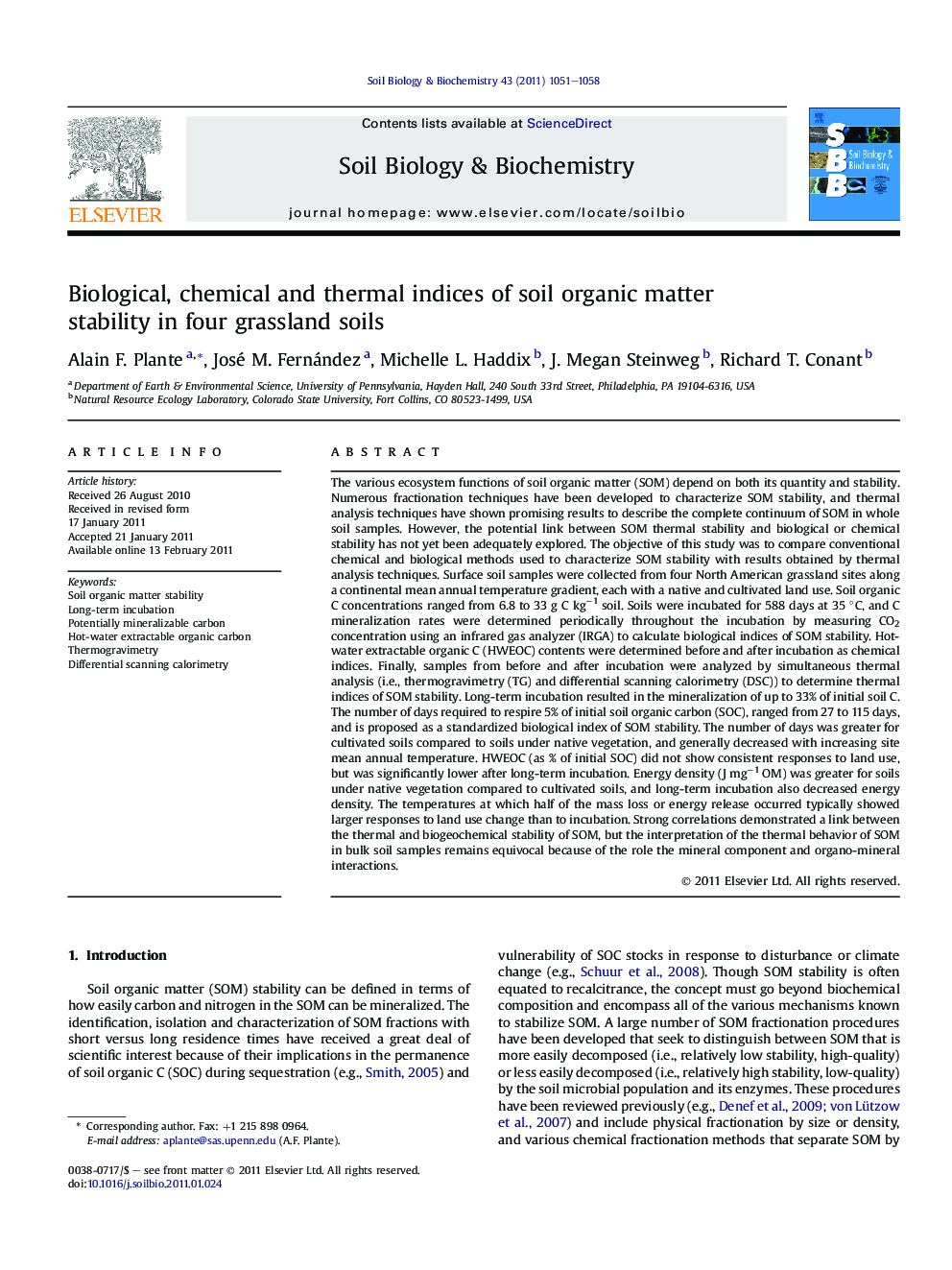| کد مقاله | کد نشریه | سال انتشار | مقاله انگلیسی | نسخه تمام متن |
|---|---|---|---|---|
| 2025526 | 1069999 | 2011 | 8 صفحه PDF | دانلود رایگان |

The various ecosystem functions of soil organic matter (SOM) depend on both its quantity and stability. Numerous fractionation techniques have been developed to characterize SOM stability, and thermal analysis techniques have shown promising results to describe the complete continuum of SOM in whole soil samples. However, the potential link between SOM thermal stability and biological or chemical stability has not yet been adequately explored. The objective of this study was to compare conventional chemical and biological methods used to characterize SOM stability with results obtained by thermal analysis techniques. Surface soil samples were collected from four North American grassland sites along a continental mean annual temperature gradient, each with a native and cultivated land use. Soil organic C concentrations ranged from 6.8 to 33 g C kg−1 soil. Soils were incubated for 588 days at 35 °C, and C mineralization rates were determined periodically throughout the incubation by measuring CO2 concentration using an infrared gas analyzer (IRGA) to calculate biological indices of SOM stability. Hot-water extractable organic C (HWEOC) contents were determined before and after incubation as chemical indices. Finally, samples from before and after incubation were analyzed by simultaneous thermal analysis (i.e., thermogravimetry (TG) and differential scanning calorimetry (DSC)) to determine thermal indices of SOM stability. Long-term incubation resulted in the mineralization of up to 33% of initial soil C. The number of days required to respire 5% of initial soil organic carbon (SOC), ranged from 27 to 115 days, and is proposed as a standardized biological index of SOM stability. The number of days was greater for cultivated soils compared to soils under native vegetation, and generally decreased with increasing site mean annual temperature. HWEOC (as % of initial SOC) did not show consistent responses to land use, but was significantly lower after long-term incubation. Energy density (J mg−1 OM) was greater for soils under native vegetation compared to cultivated soils, and long-term incubation also decreased energy density. The temperatures at which half of the mass loss or energy release occurred typically showed larger responses to land use change than to incubation. Strong correlations demonstrated a link between the thermal and biogeochemical stability of SOM, but the interpretation of the thermal behavior of SOM in bulk soil samples remains equivocal because of the role the mineral component and organo-mineral interactions.
Research highlights
► Days to respire 5% of initial C is proposed as an index of soil organic matter stability.
► Hot-water extractable organic C was significantly lower after long-term incubation.
► Long-term incubation decreased thermally labile organic matter.
► Energy density and respiration during incubation were strongly correlated.
Journal: Soil Biology and Biochemistry - Volume 43, Issue 5, May 2011, Pages 1051–1058